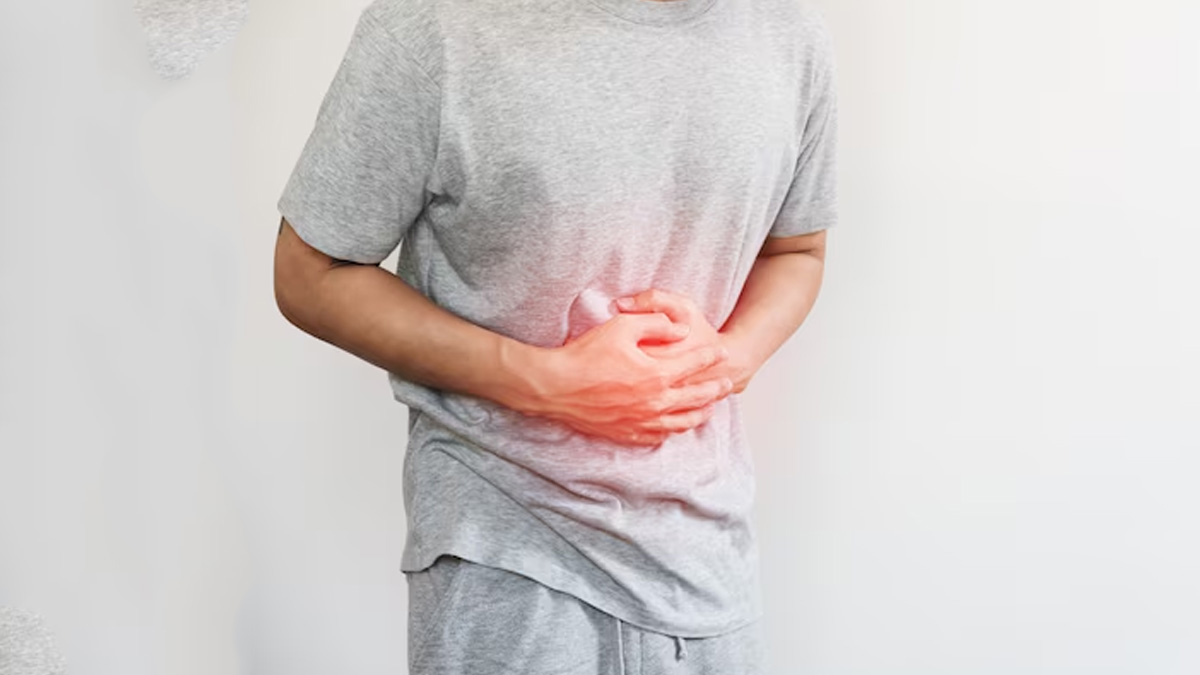
Abdominal pain is a common gastrointestinal symptom, indicating various conditions including constipation, Irritable Bowel Syndrome (IBS), and stomach viruses. It is also a telltale sign of menstruation in women, also referred to as menstrual cramps. However, in certain cases, pain and discomfort in the abdomen can also be a symptom of hernia, a condition characterised by a bulge in the abdomen or groyne that appears during activity and goes away when you rest.
Table of Content:-
But how do we really know if the abdominal pain is caused by a hernia? The OnlyMyHealth team interacted with Dr Vivek Shetty, Consultant - Surgical Gastroenterology, Jaslok Hospital and Research Centre, Mumbai, who shared important insights on the same.
Also Read: Femoral Hernia: Causes, Symptoms and Treatment
What Is Hernia?

Dr Shetty describes hernia as a condition where the intra-abdominal contents (fat or intestines) protrude out of an area of weakness in the muscle. According to him, it is one of the most common surgical conditions seen in both adults and children.
Some of the common types of hernias include:
- Inguinal hernias occur in the groyne region, affecting mostly males.
- Umbilical hernia is characterised by a swelling or bulge near the belly button. This type of hernia is more common in females.
- Congenital hernias are usually seen at birth or in young adults, where a passage that is supposed to be closed during development fails to do so.
- Acquired hernias occur later in life due to muscle weakness, prior surgery causing the muscle to thin out, or some conditions causing an increase in the abdominal pressure.
As per reports, about 10% of the global population develops some type of hernia during their lifetime. More than 10 lakh abdominal hernia repairs are performed each year, with inguinal hernia repairs constituting nearly 7.7 lakh of these cases.
How To Know If Abdominal Pain Is Associated With Hernia

While abdominal pain can be a symptom of a hernia, it's not the most common sign. Therefore, to determine whether you have the condition, it is best to consult a doctor and get yourself examined. However, you can also look at other characteristic symptoms of hernia.
According to Dr Shetty, the most common symptom of hernia is a painless swelling that appears at the belly button or groyne.
He notes that this symptom increases or becomes more visible when standing or straining and may decrease when pressing or lying down.
Also Read: Understanding All About Hernia: Causes, Symptoms, Treatment And Management
He further shares that a long-standing hernia may be accompanied by discomfort or a dragging sensation.
On the other hand, severe pain associated with hernia is unusual and should alert you to a possible complication.
"If the swelling becomes painful or if the swelling does not reduce pressure, it could be a sign of the intestine getting stuck at the hernia site and may need emergency surgery," the doctor warns, adding, "These can be dangerous because the hernia defect is small, and when a loop of intestine gets stuck in it, the blood supply to the intestine may be interrupted, which can lead to gangrene of the bowel."
In such situations, emergency surgery will be needed to correct it.
Other common signs include pressure, aching, or a pinching sensation in the affected area, especially when straining, lifting, coughing, or laughing.
How To Approach The Condition?

It is important to note that severe pain that is constant or accompanied by nausea, vomiting, or a fever should be addressed right away, as these could be signs of a strangulated hernia, a serious medical condition.
In such situations, emergency surgery will be needed to correct it, says Dr Shetty.
He adds, “Overall, hernias are very common conditions that are correctable by surgery. With the advent of minimally invasive methods, recovery has become faster and less painful.
Meet a surgeon to get an opinion on whether your hernia can be safely observed or should undergo treatment.”
Also watch this video
How we keep this article up to date:
We work with experts and keep a close eye on the latest in health and wellness. Whenever there is a new research or helpful information, we update our articles with accurate and useful advice.
Current Version